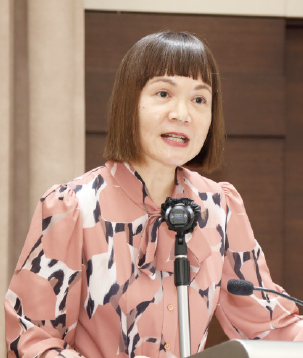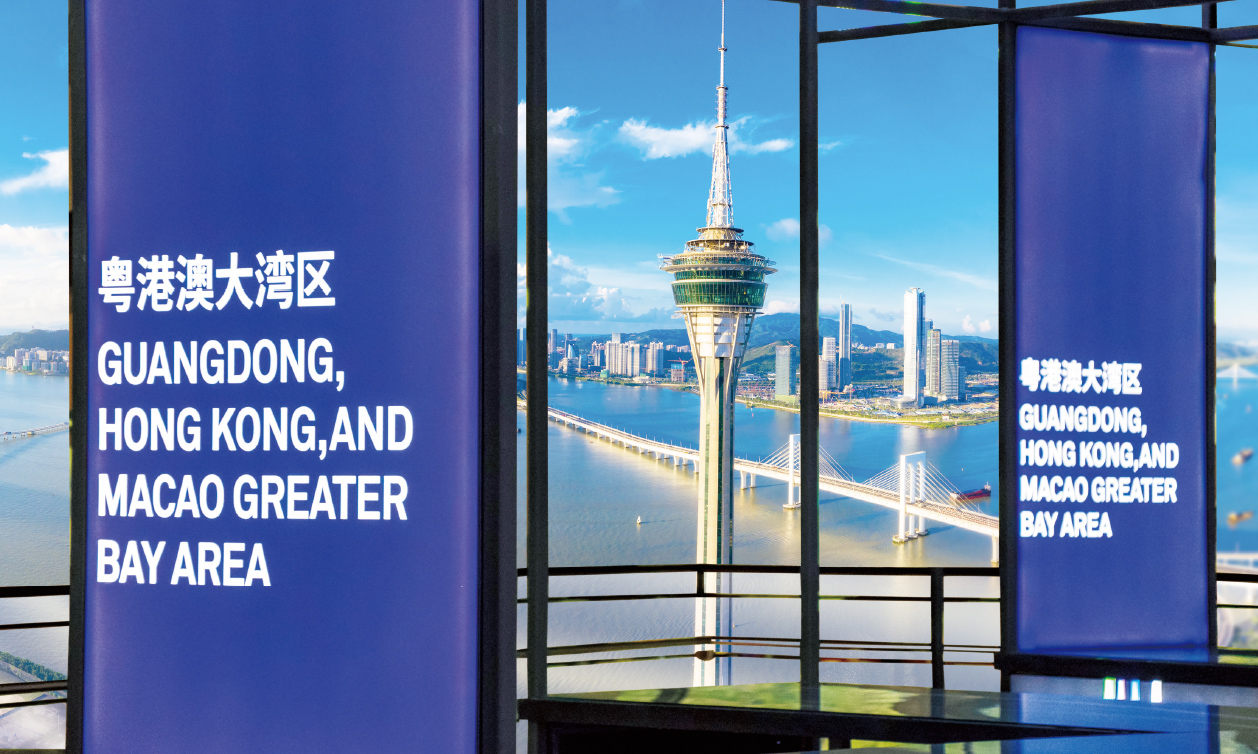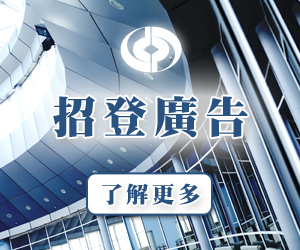
The Action Plan announced by the National Development and Reform Commission at the end of last year aims to adopt a holistic approach to build a more ideal environment to further deepen cooperation among Guangdong, Hong Kong and Macao, thereby enhancing the level of market integration and global competitiveness of the Greater Bay Area.
 Maisie Chan
Maisie Chan
Collaborate and Integrate to Drive Robust Development of
the Greater Bay Area
Making holistic effort at full throttle for policy breakthroughs
According to Maisie Chan, Commissioner for the Development of the Guangdong-Hong Kong-Macao Greater Bay Area, total economic output of the Guangdong-Hong Kong-Macao Greater Bay Area (Greater Bay Area) in 2023 exceeded RMB 14 trillion, generating one-ninth of the national total despite occupying less than 0.6% of China’s land area. “The Greater Bay Area is an extremely attractive investment destination for businesses worldwide, and Hong Kong is an ideal springboard to that region.”

The development of the Greater Bay Area is therefore a priority for the HKSAR Government. It is stepping up efforts to drive Greater Bay Area development and integration into China’s overall growth roadmap. While maintaining close ties with relevant central government departments, the HKSAR Government is also partnering with the Guangdong and Macao governments to pursue policy innovations and breakthroughs as a means to promote higher levels of connectivity building and integrated development in the Greater Bay Area.
Chan says the HKSAR Government is employing a multi-pronged approach to boost Greater Bay Area development and deliver numerous growth opportunities and momentum for Hong Kong. Measures include further consolidating and enhancing Hong Kong’s unique position and advantages; enhancing its international competitiveness; promoting high-level connectivity between Greater Bay Area municipalities to create a favorable development and business environment for people and enterprises; promoting across-the-board collaboration between Guangdong, Hong Kong and Macao through major partnership platforms; and accelerating Hong Kong’s development as an international science and technology innovation center to support coordinated advancement of technology innovation and related industries across the Greater Bay Area.
Taking forward the new strategic positioning of “One Point, Two Places”
Looking ahead, Chan points out that Hong Kong should work in line with China’s development direction of building new quality productive forces and continue to lead all sectors of society to benefit from great opportunities as China and the Greater Bay Area grow and progress. It should strengthen collaboration with other provinces and municipalities to seek higher, wider and deeper convergence of rules and mechanisms. At the same time, efforts should be directed to facilitate the convenient flow of various factors of production, creating a more inclusive and convenient environment for business development, and giving full play to Hong Kong’s dual role as a “super-connector” and “super value-adder” between the mainland and the global market.
Taking its role one step further, Hong Kong will work hand in hand with other Greater Bay Area cities to take forward and fulfill the new strategic positioning of “One Point, Two Places”. The Greater Bay Area will be an icon of burgeoning growth by acting as the strategic fulcrum point of a new development pattern; the place to showcase high-quality development; and the place that spearheads Chinese-style modernization. Effective policies with proven success in the Greater Bay Area can demonstrate and make impact to the whole country, contributing to in-depth reform and opening up. The HKSAR Government also hopes to work with all sectors to tell good stories of Hong Kong and the Greater Bay Area with true facts through different means, such as overseas visits and publicity.
 Fang Zhou
Fang Zhou
Explore New Models to Build an International Greater Bay Area
With the plan for the Greater Bay Area now completed its first five years, the Action Plan further states to comprehensively improve the Greater Bay Area in five major areas. These include “creating a unified and efficient market environment with orderly competition,” “creating a government environment that is easy to regulate, open and transparent,” “establishing a rule of law-based environment for fair, just and healthy development,” “creating an open environment with smooth circulation and win-win cooperation”, and deeply implementing projects linking the Greater Bay Area to improve the level of market integration more quickly.
Implement innovative systems for integration of two systems
Regarding the improvement of market access conditions mentioned as part of “creating a unified and efficient market environment with orderly competition,” Fang Zhou, Research Director of the One Country Two Systems Research Institute, said that from a macro perspective, the biggest breakthroughs for the Greater Bay Area in institutional design in the past five years have come from the Guangdong-Macao In-Depth Cooperation Zone in Hengqin.
 Fang said that the Guangdong-Macao In-Depth Cooperation Zone has achieved breakthroughs through the chemical reaction brought about by the integration of the two systems. The first is experimenting with allowing goods to enter the Zone freely across the first line, i.e. from Macao, and handling customs duties, taxes and inspections only if the goods cross the second line, i.e. from the Zone to the Mainland. The second is that the Zone creatively adopts a new system of “joint consultation, co-construction, co-management and sharing” to combine the advantages of the two systems in a specific area. The special measures to ease market access are set to help the Greater Bay Area’s business environment move to a higher level.
Fang said that the Guangdong-Macao In-Depth Cooperation Zone has achieved breakthroughs through the chemical reaction brought about by the integration of the two systems. The first is experimenting with allowing goods to enter the Zone freely across the first line, i.e. from Macao, and handling customs duties, taxes and inspections only if the goods cross the second line, i.e. from the Zone to the Mainland. The second is that the Zone creatively adopts a new system of “joint consultation, co-construction, co-management and sharing” to combine the advantages of the two systems in a specific area. The special measures to ease market access are set to help the Greater Bay Area’s business environment move to a higher level.
He added that even though Hengqin will face challenges at the specific operational level, such an innovative system of “joint consultation, co-construction, co-management and sharing” is a major institutional breakthrough in the development of the Greater Bay Area so far. The experience is certainly worthwhile for Hong Kong and Guangdong to learn from when they strengthen cooperation going forward, even if they may not necessarily take reference from Hengqin’s design concepts.
Draw on Hengqin’s experience for stronger Guangdong-Hong Kong cooperation
Fang said that at this stage, five key directions may be followed to continue elevating the Greater Bay Area to greater heights based on its existing development. The first is to fully draw on Hengqin’s plan and relevant practical experience, and then try to explore innovative development models within the existing Guangdong-Hong Kong cooperation platform.
“The Shenzhen and Hong Kong park in Hetao is actually still in a state of ‘each has its own management’ and has not yet achieved integrated development in the true sense.” He suggested that Hetao could study and follow Hengqin’s approach to promote integrated management of the parks on both sides and operate under a common management mechanism, and then also drive Hetao to achieve high-quality development through joint investment attraction.
Attract Guangdong enterprises to Hong Kong to enrich its industrial structure
Fang elaborated that the second is to actively promote high-level industrial collaboration to drive enterprises to increase R&D investments in the two major fields of innovation and technology (I&T) and finance. In addition, make use of the vast hinterland of Mainland cities in the Greater Bay Area to create conditions for Mainland tech companies to strengthen cooperation with Hong Kong’s universities and scientific research institutions, and use investments from Mainland tech companies to promote the commercialisation of high-quality scientific research results. The third is to expand the interconnection of transportation infrastructure and new infrastructure networks, and with the hardware completely in place, push forward “soft” policy support measures such as those for cross boundary customs clearance.
“The fourth is to strengthen the collaboration of public services and social policies to expand cooperation among areas such as taxation, elderly care and medical care to build a common living home.” He further said that the fifth is to promote high-quality development in Northern Metropolis so that it can develop into a key platform for Hong Kong to integrate into the country’s overall development.
In Fang’s view, from the perspective of promoting the sustainable development of the Greater Bay Area, it has been mostly limited to Mainland cities unilaterally opening-up to Hong Kong in the past. Going forward, more focus could be placed on “going global” to encourage more Guangdong enterprises to actively go to Hong Kong and use it as a platform to go global. This will also help enrich Hong Kong’s entire industrial structure and create job opportunities for Hong Kong.




